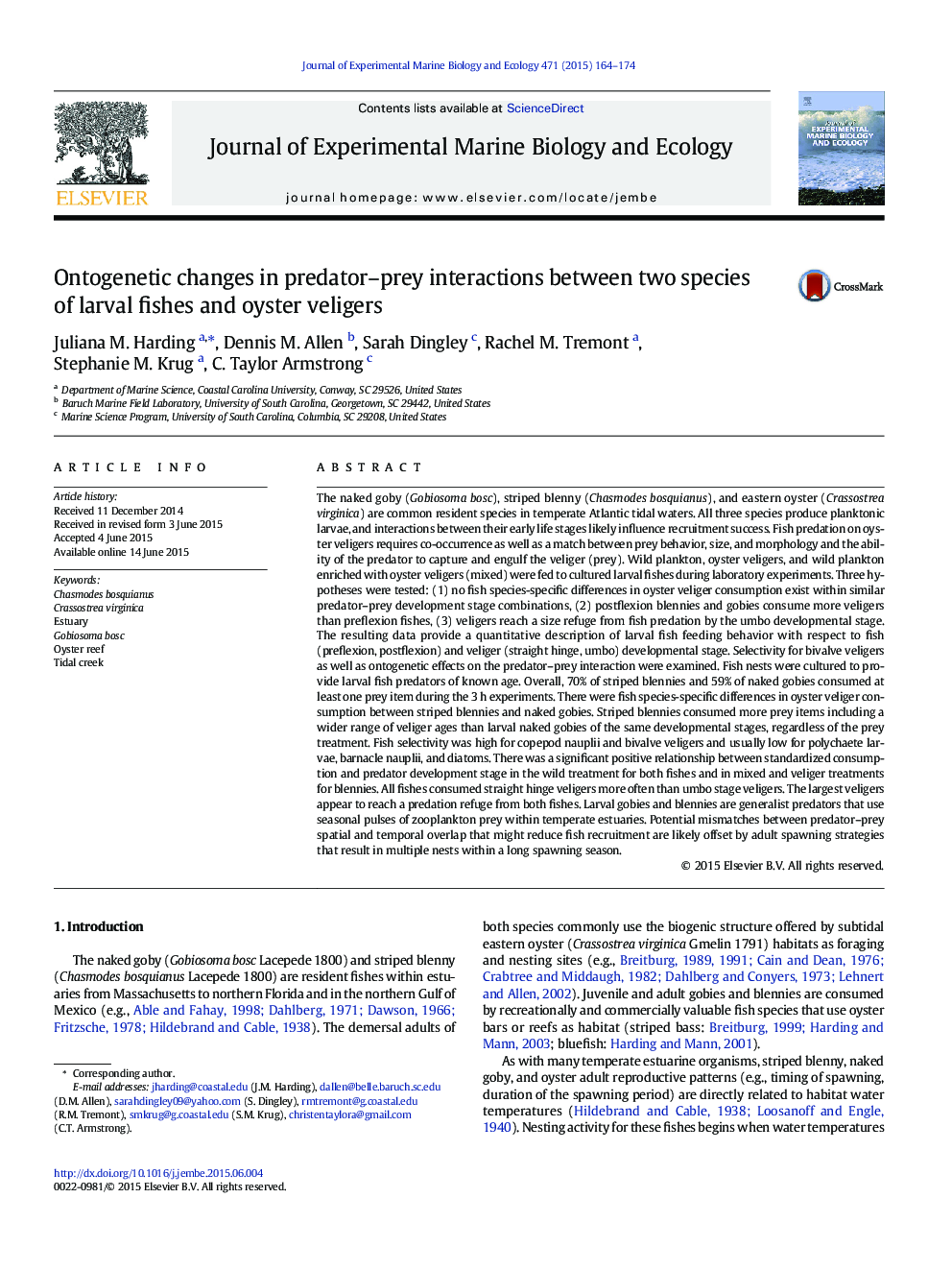| Article ID | Journal | Published Year | Pages | File Type |
|---|---|---|---|---|
| 6303874 | Journal of Experimental Marine Biology and Ecology | 2015 | 11 Pages |
â¢Larval striped blennies consumed more prey than naked gobies.â¢Larval blennies ate a wider age range of oyster veligers than gobies.â¢Oyster veligers were selectively consumed from diverse planktonic prey fields.â¢Standardized consumption increased with larval fish ontogeny.â¢Large oyster veligers reach a predation refuge from both larval fishes.
The naked goby (Gobiosoma bosc), striped blenny (Chasmodes bosquianus), and eastern oyster (Crassostrea virginica) are common resident species in temperate Atlantic tidal waters. All three species produce planktonic larvae, and interactions between their early life stages likely influence recruitment success. Fish predation on oyster veligers requires co-occurrence as well as a match between prey behavior, size, and morphology and the ability of the predator to capture and engulf the veliger (prey). Wild plankton, oyster veligers, and wild plankton enriched with oyster veligers (mixed) were fed to cultured larval fishes during laboratory experiments. Three hypotheses were tested: (1) no fish species-specific differences in oyster veliger consumption exist within similar predator-prey development stage combinations, (2) postflexion blennies and gobies consume more veligers than preflexion fishes, (3) veligers reach a size refuge from fish predation by the umbo developmental stage. The resulting data provide a quantitative description of larval fish feeding behavior with respect to fish (preflexion, postflexion) and veliger (straight hinge, umbo) developmental stage. Selectivity for bivalve veligers as well as ontogenetic effects on the predator-prey interaction were examined. Fish nests were cultured to provide larval fish predators of known age. Overall, 70% of striped blennies and 59% of naked gobies consumed at least one prey item during the 3Â h experiments. There were fish species-specific differences in oyster veliger consumption between striped blennies and naked gobies. Striped blennies consumed more prey items including a wider range of veliger ages than larval naked gobies of the same developmental stages, regardless of the prey treatment. Fish selectivity was high for copepod nauplii and bivalve veligers and usually low for polychaete larvae, barnacle nauplii, and diatoms. There was a significant positive relationship between standardized consumption and predator development stage in the wild treatment for both fishes and in mixed and veliger treatments for blennies. All fishes consumed straight hinge veligers more often than umbo stage veligers. The largest veligers appear to reach a predation refuge from both fishes. Larval gobies and blennies are generalist predators that use seasonal pulses of zooplankton prey within temperate estuaries. Potential mismatches between predator-prey spatial and temporal overlap that might reduce fish recruitment are likely offset by adult spawning strategies that result in multiple nests within a long spawning season.
